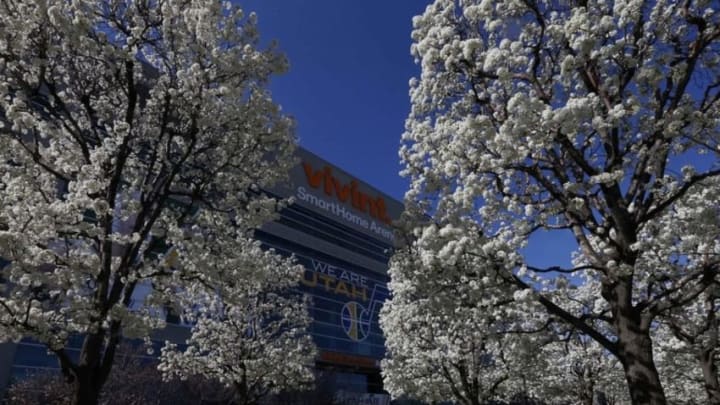The Utah Jazz became the professional sports franchise with the oxymoron for a nickname only after being founded as the New Orleans Jazz in 1974.

The Utah Jazz weren’t always the biggest oxymoron in professional sports.
When New Orleans was awarded its first NBA expansion franchise in 1974, Jazz was picked as the nickname and it fit like five fingers in a tailor-made glove.
Unfortunately, the basketball team that was assembled played as if it never took off those tailor-made gloves.
The Jazz began play at the 7,800-seat Municipal Auditorium and also played home games at Loyola Field House and after a 1-16 start to their inaugural season, they had trouble filling either arena to capacity.
Related Story: The Greatest Player In Every Franchise's History
So of course it made sense in 1975 to move the Jazz to the cavernous Louisiana Superdome, where those 5,000 or so in attendance could have their pick of more than 55,000 empty seats.
That’s not entirely fair, though—attendance at the Superdome in the first season there was 12,519 per game, but dipped to less than 9,000 a game in the team’s final season in the Big Easy, per APBR.org.
More from Utah Jazz
- 5 NBA teams on the rise that will surprise everyone in 2023-24
- Grading the John Collins trade for the Atlanta Hawks and Utah Jazz
- Ranking the 10 championship-less NBA teams by closeness to title
- A former lottery pick may have a permanent home with the Utah Jazz
- 3 Teams that dodged a bullet with Russell Westbrook news
It was the second attempt to put a professional basketball team in New Orleans. The New Orleans Buccaneers played the first three seasons in the American Basketball Association before the franchise moved to Memphis in 1970.
Founding owner Sam Battistone moved the team to Salt Lake City in 1979 and, inexplicably, took the “Jazz” name with him.
Larry Miller, who bought 50 percent of the club from Battistone in 1985, purchased the remaining half of the franchise in 1986 when Battistone nearly sold the team to a group that would have moved it to Minneapolis.
Miller built the Delta Center and in 1991, the Jazz moved from the Salt Palace to the new arena, which—now named Vivint Smart Home Arena—remains their home court.
When Miller died in 2009, ownership of his holdings—including the Jazz—transferred to his wife, Gail Miller.
The Jazz didn’t make the playoffs until their 10th season, 1983-84, but once they got there, it was a long time before they left.
Utah reached the postseason for 20 years in a row before missing in 2003-04. Both the nine-year drought and the 20-year run of playoff berths are the longest in team history.
In 42 seasons, the Jazz are 1,815-1,581, a .534 winning percentage that is seventh-best among the 30 active NBA teams.
Utah reached the NBA Finals in back-to-back seasons in 1996-97 and 1997-98, losing in six games each year to the Chicago Bulls.
The club has had nine general manager/personnel managers, with Kevin O’Connor the longest-tenured, serving from August 1999 to August 2012. Scott Layden had the position from June 1989 to August 1999 and his father, Frank Layden, was in the job from May 1979 to June 1987.
Frank Layden is the franchise’s only Executive of the Year winner, earning the award in 1983-84.
Current general manager Dennis Lindsay was hired in August 2012.
The franchise has had only eight coaches in 41 seasons. Jerry Sloan was in place for parts of 23 of those campaigns, posting a 1,127-682 regular-season record and a 96-100 postseason mark from December 1988-February 2011.

The J-Notes
Frank Layden coached the Jazz from December 1981-December 1988 and was 277-294 in the regular season and 18-23 in the playoffs.
Frank Layden is also the team’s only Coach of the Year recipient, doubling up on awards in 1983-84.
Current coach Quin Snyder was hired in June 2014 and is 78-86 in his two seasons, missing the playoffs each year.
The Jazz have never had the No. 1 overall pick in the draft. The highest drafted player in franchise history is Darrell Griffith, taken second overall from Louisville in 1980. The Jazz has selected third three times and fifth once.
Here are the 25 best players in the history of the New Orleans/Utah Jazz. Players had to have appeared in 150 games and averaged a minimum of 20 minutes per game for the team to qualify for this list.
Next: Gentle Ben Battled Up Front In Early Utah Days
